Abstract
1. The properties of receptors in the duck's bill have been studied by recording from units isolated by dissecting fine filaments from the maxillary and ophthalmic nerves.
2. The units studied were divisible into three groups, phasic mechanoreceptors responsive to vibration, thermoreceptive units, and high threshold mechanoreceptors.
3. Vibration-sensitive mechanoreceptors (113 units) had small receptive fields, showed a rapidly adapting discharge to mechanical stimulation of the bill, were sensitive to vibratory but not to thermal stimuli and showed no background discharge.
4. Temperature receptors (twenty-one units) were insensitive to mechanical stimulation and showed a temperature-dependent background discharge. Sudden cooling produced a transient increase in discharge frequency.
5. High threshold mechanosensitive units (eight units) gave a slowly adapting discharge to strong mechanical stimulation and were insensitive to vibratory and thermal stimulation.
6. It is concluded that the low-threshold, vibration-sensitive responses come from Herbst corpuscles. No specific function can yet be assigned to the Grandry corpuscles.
Full text
PDF
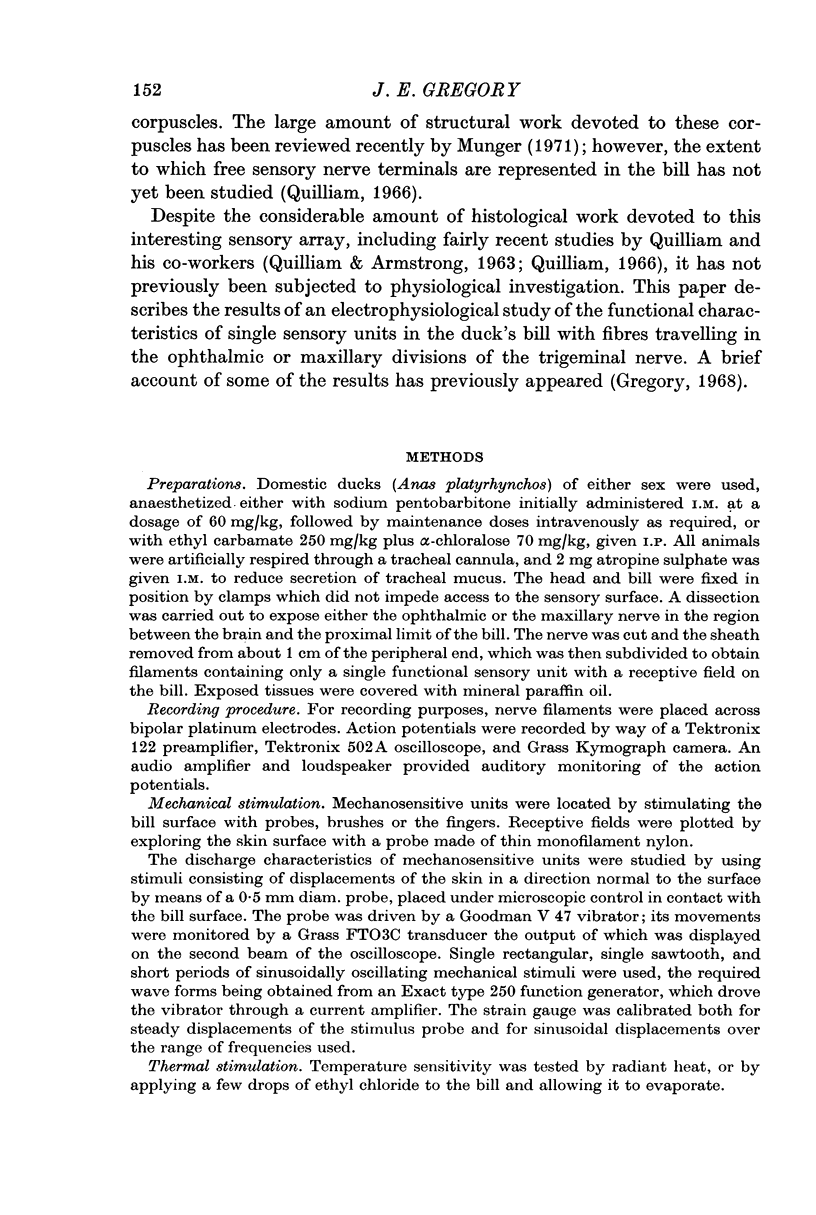
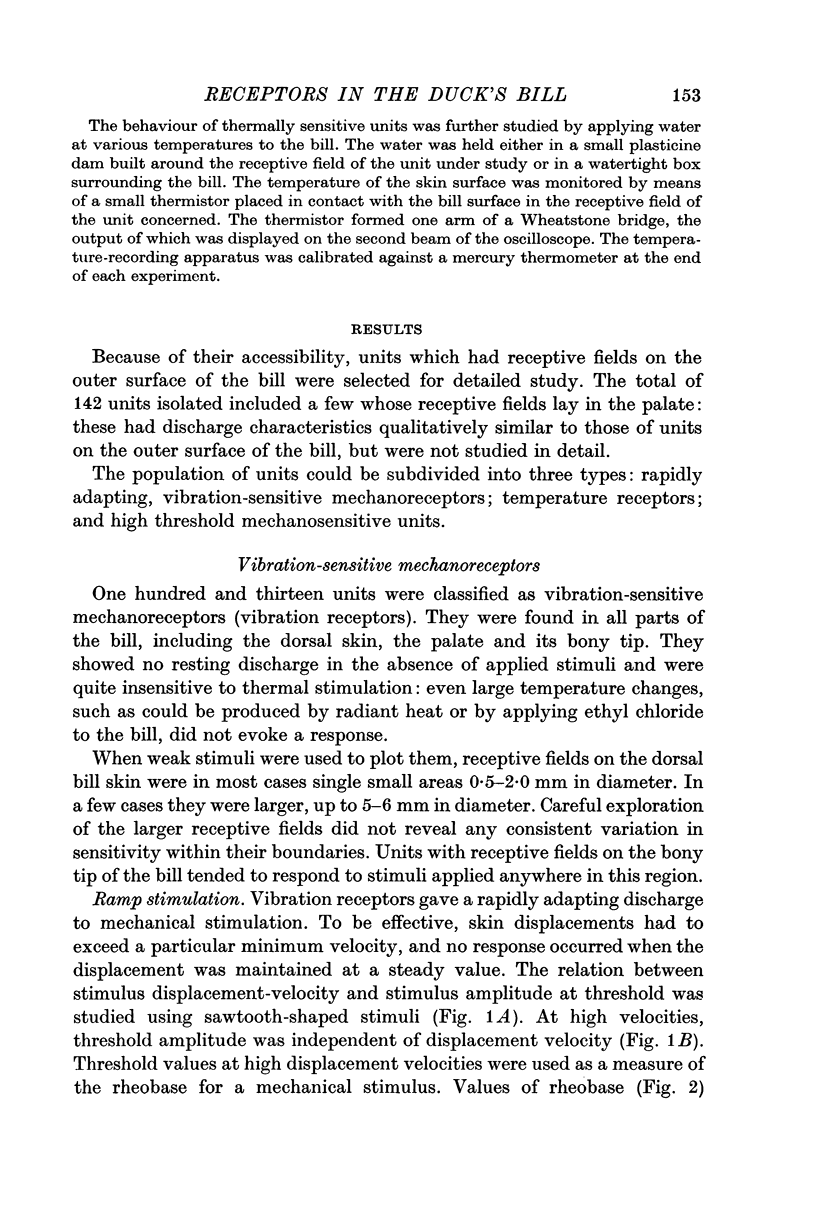

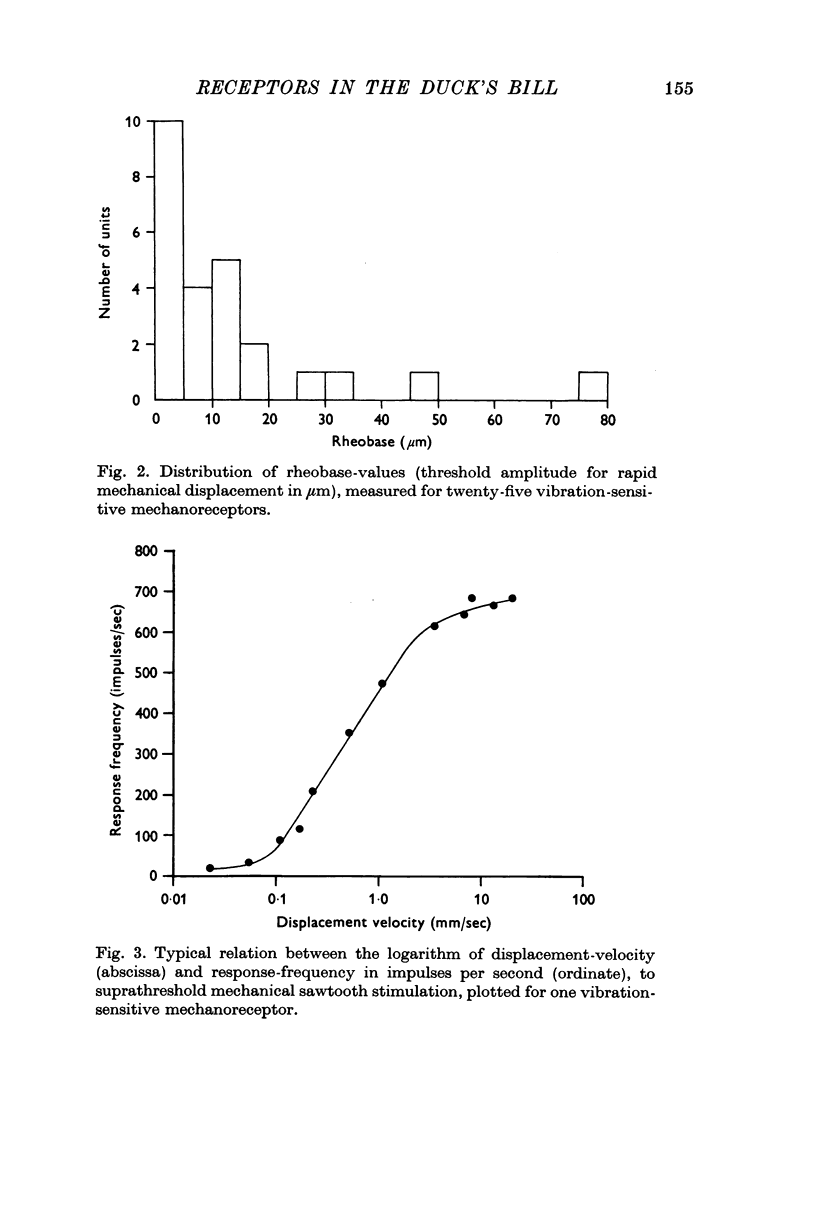
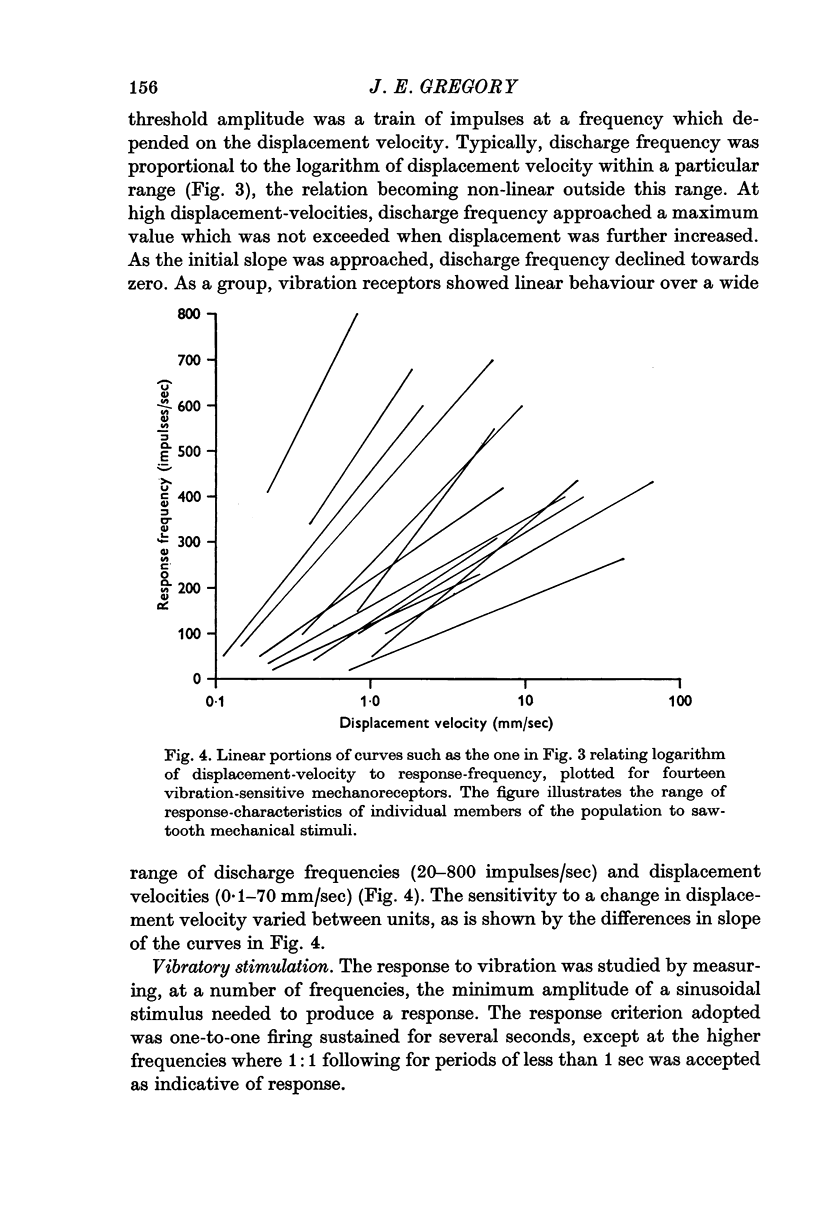
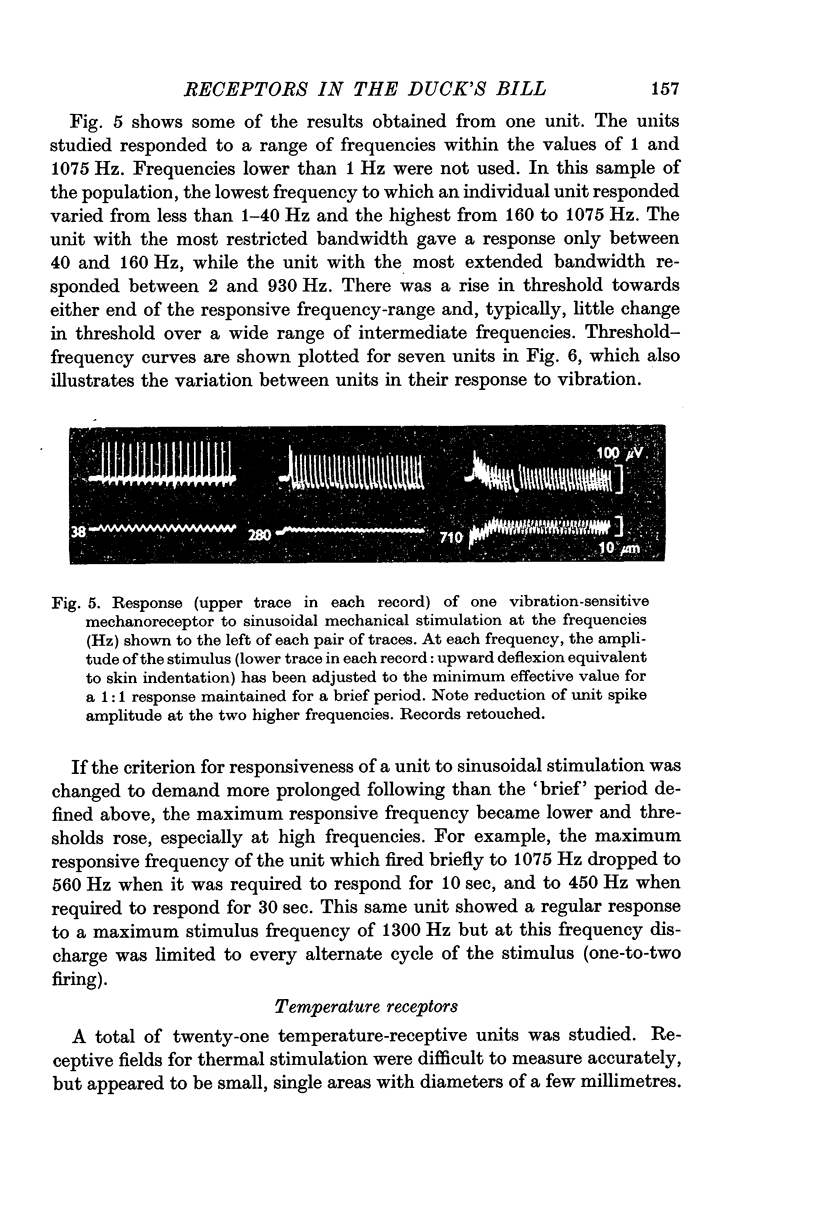
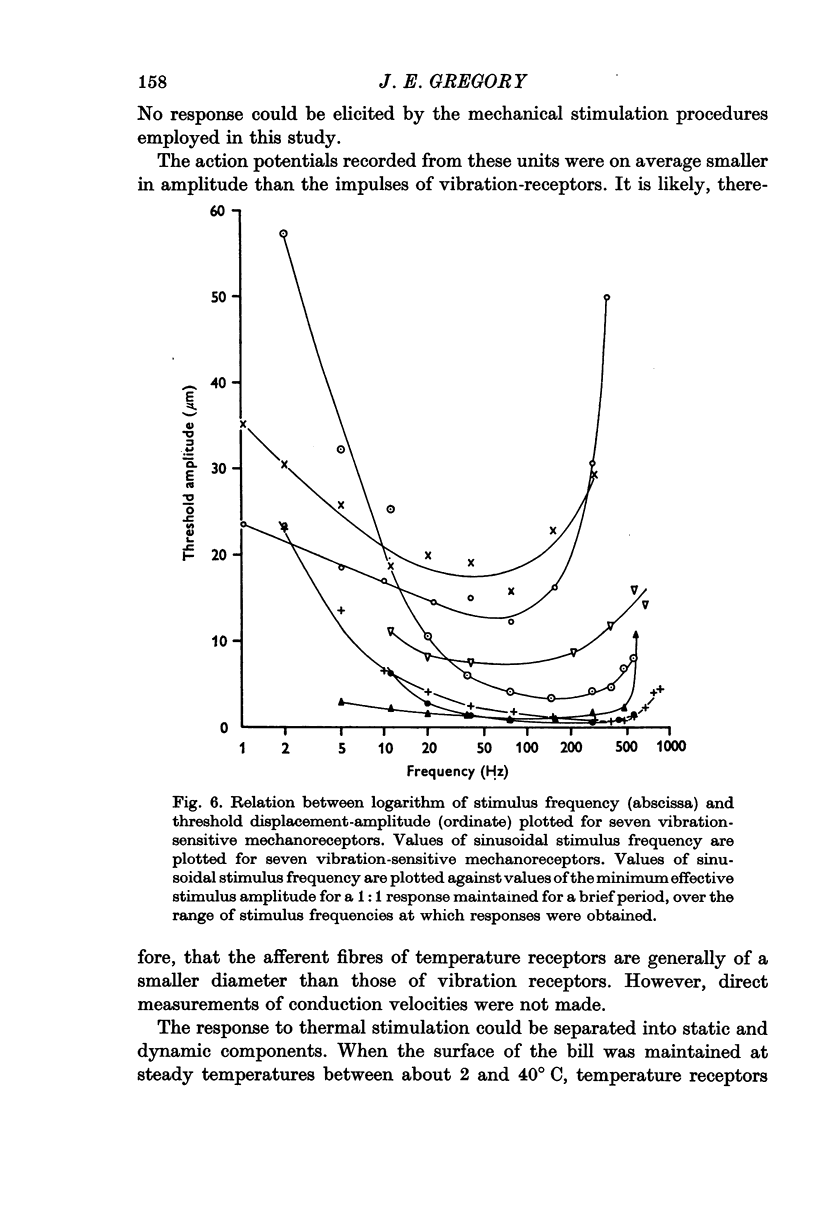
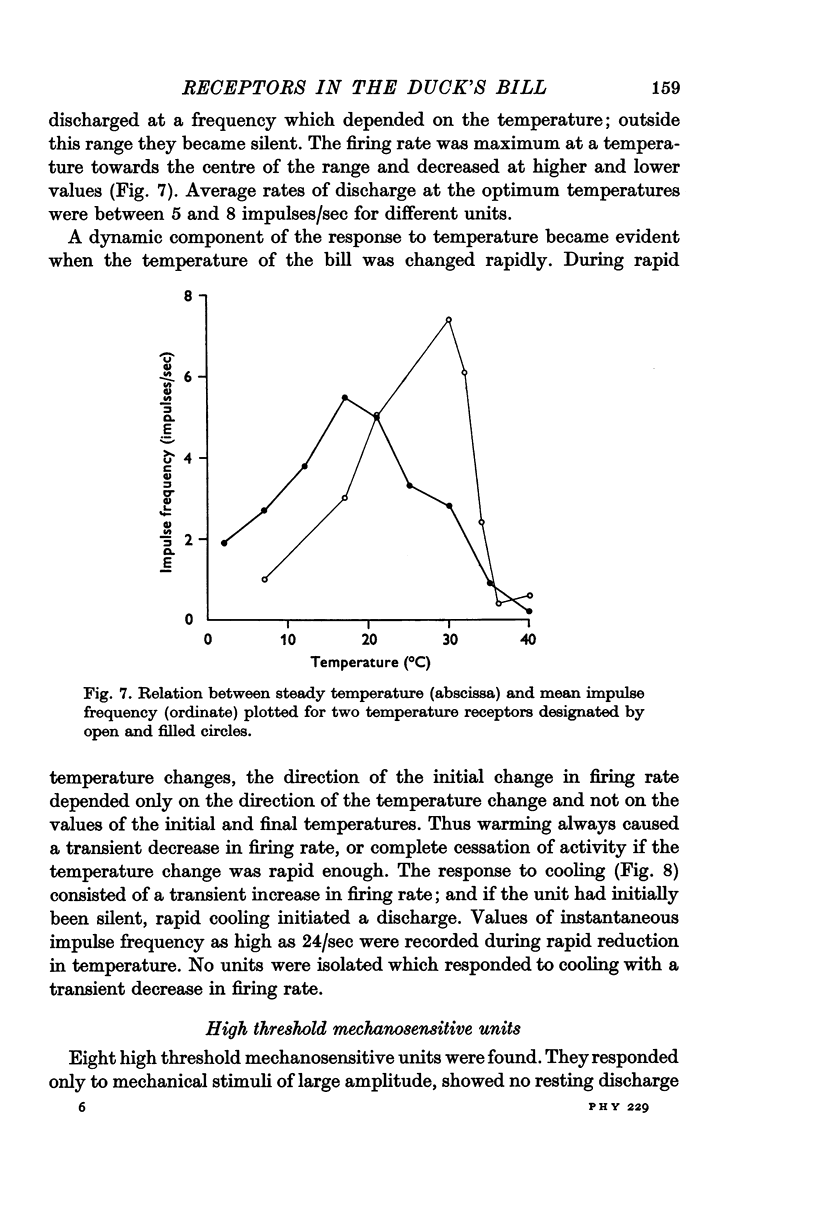
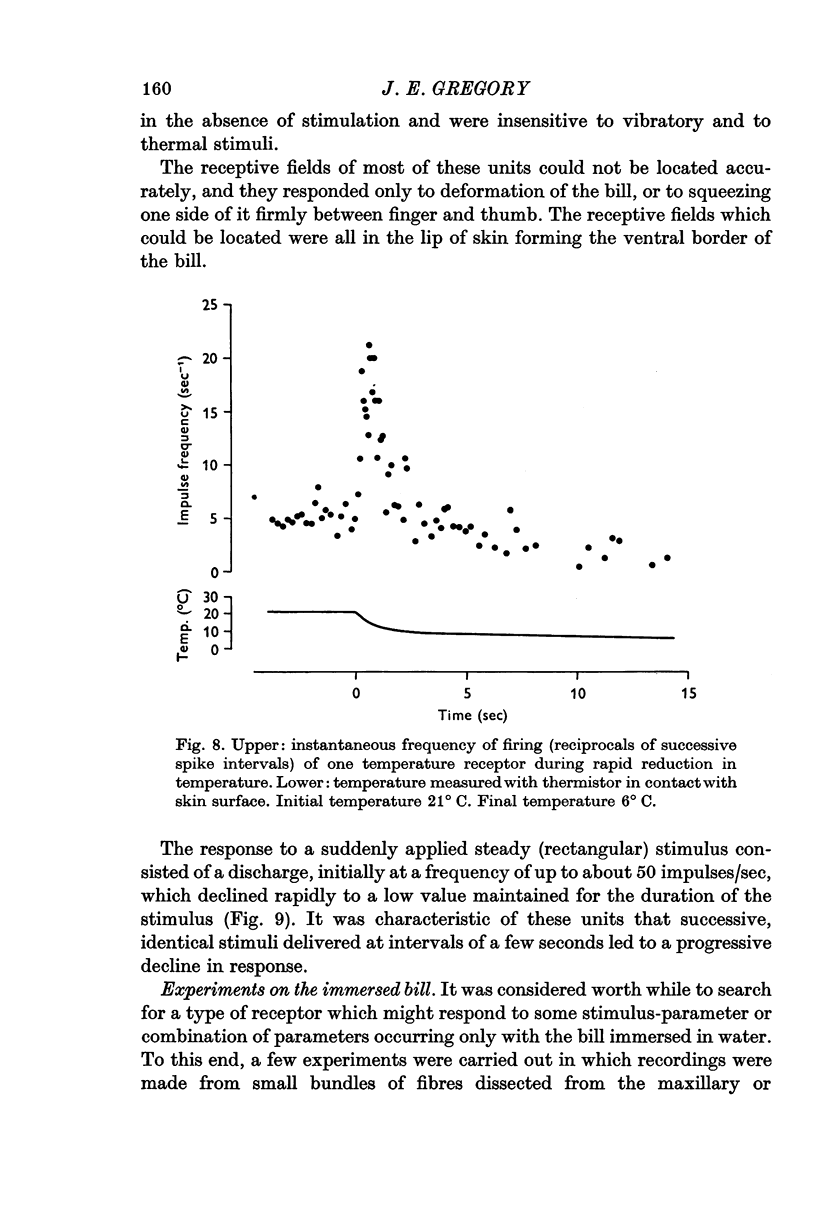
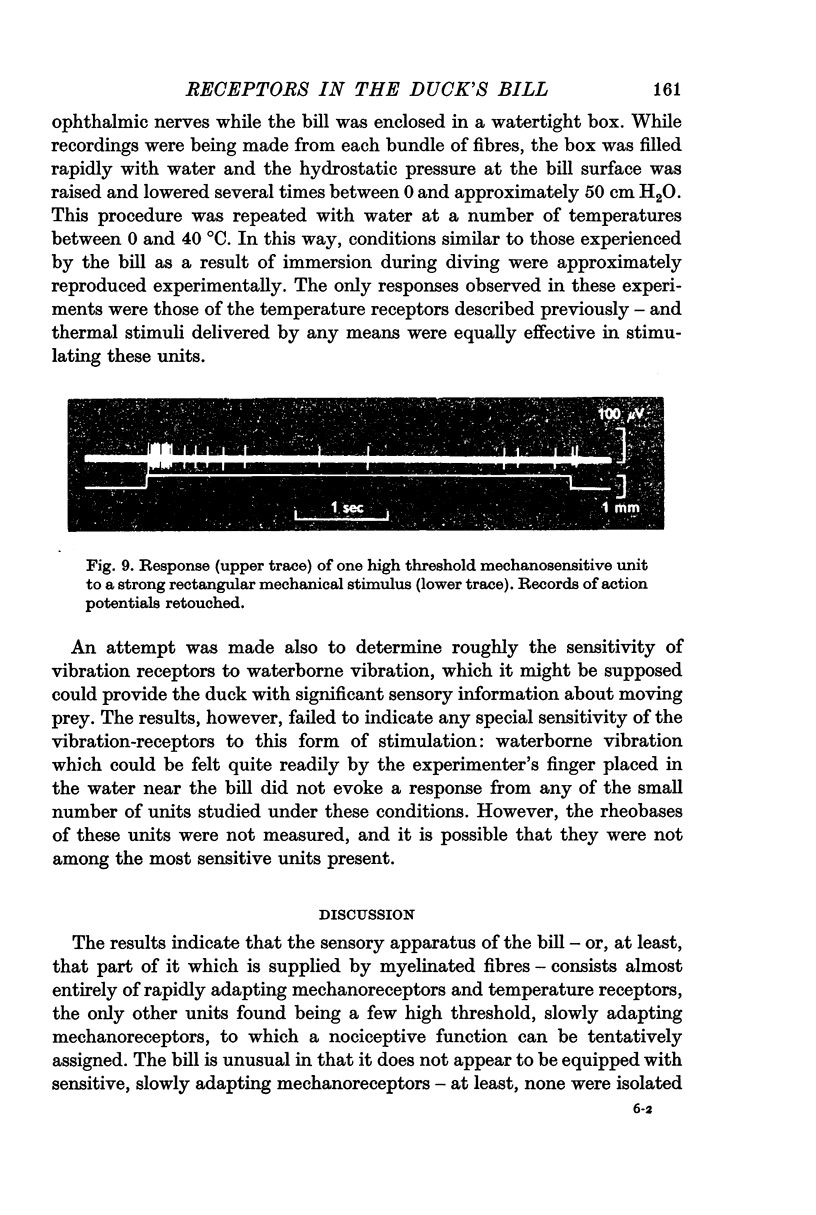
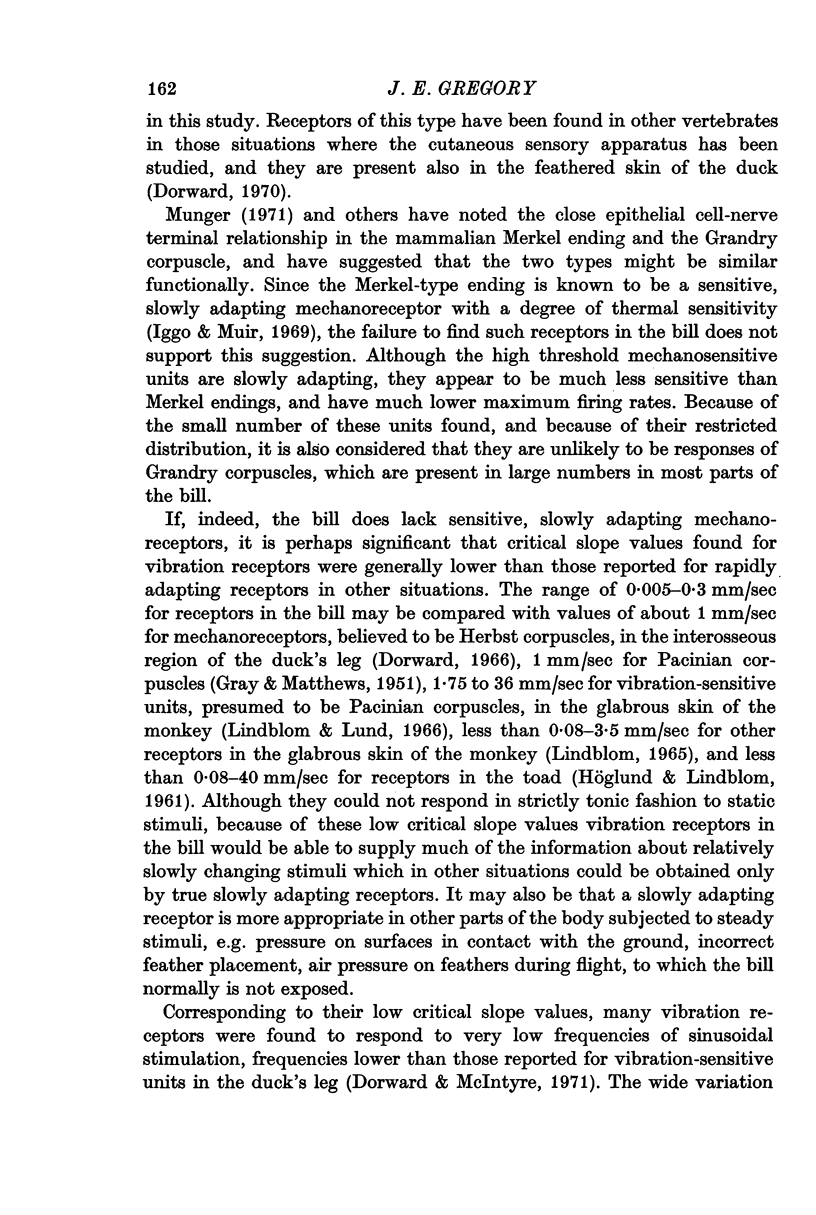
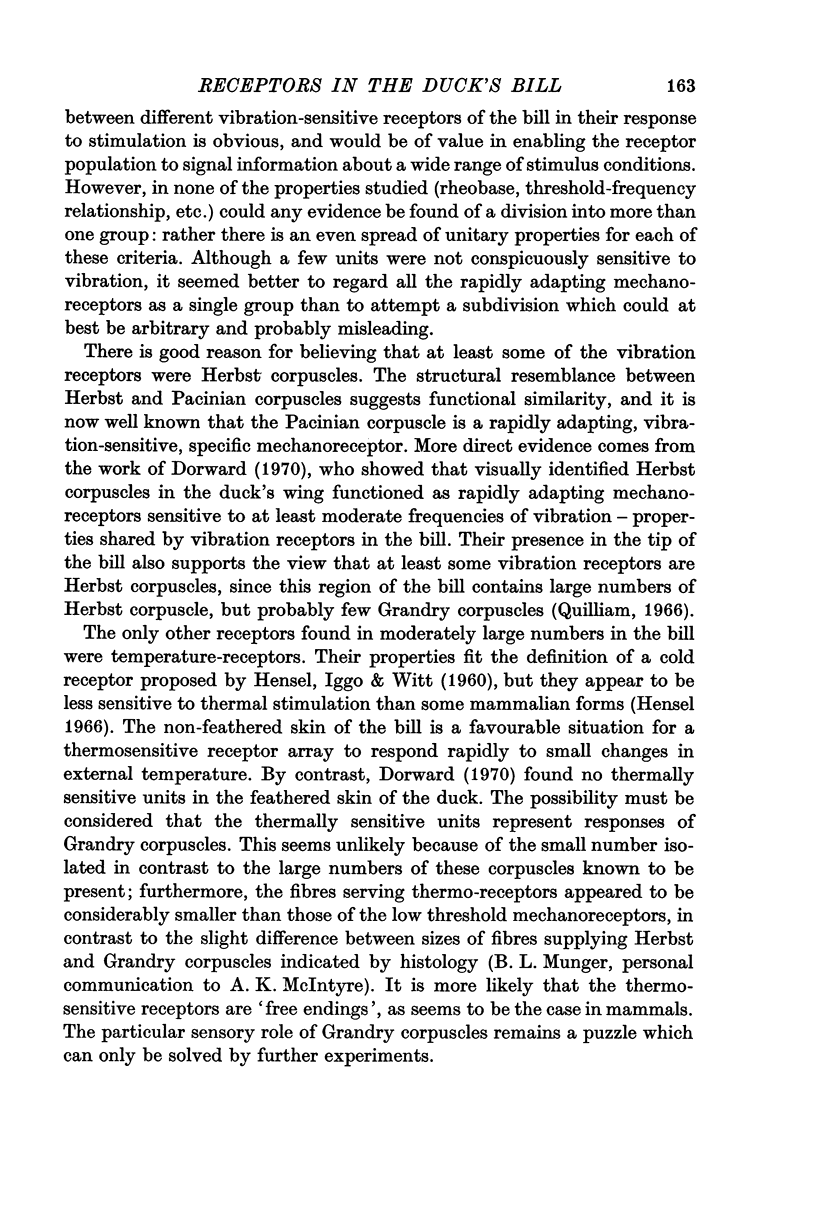

Selected References
These references are in PubMed. This may not be the complete list of references from this article.
- Dorward P. K., McIntyre A. K. Responses of vibration-sensitive receptors in the interosseous region of the duck's hind limb. J Physiol. 1971 Dec;219(1):77–87. doi: 10.1113/jphysiol.1971.sp009650. [DOI] [PMC free article] [PubMed] [Google Scholar]
- GRAY J. A. B., MATTHEWS P. B. C. A comparison of the adaptation of the Pacinian corpuscle with the accommodation of its own axon. J Physiol. 1951 Aug;114(4):454–464. doi: 10.1113/jphysiol.1951.sp004636. [DOI] [PMC free article] [PubMed] [Google Scholar]
- HENSEL H., IGGO A., WITT I. A quantitative study of sensitive cutaneous thermoreceptors with C afferent fibres. J Physiol. 1960 Aug;153:113–126. doi: 10.1113/jphysiol.1960.sp006522. [DOI] [PMC free article] [PubMed] [Google Scholar]
- HOGLUND G., LINDBLOM U. The discharge in single touch receptors elicited by defined mechanical stimuli. Acta Physiol Scand. 1961 Jun;52:108–119. doi: 10.1111/j.1748-1716.1961.tb02207.x. [DOI] [PubMed] [Google Scholar]
- Iggo A., Muir A. R. The structure and function of a slowly adapting touch corpuscle in hairy skin. J Physiol. 1969 Feb;200(3):763–796. doi: 10.1113/jphysiol.1969.sp008721. [DOI] [PMC free article] [PubMed] [Google Scholar]
- Lindblom U., Lund L. The discharge from vibration-sensitive receptors in the monkey foot. Exp Neurol. 1966 Aug;15(4):401–417. doi: 10.1016/0014-4886(66)90138-5. [DOI] [PubMed] [Google Scholar]
- Lindblom U. Properties of touch receptors in distal glabrous skin of the monkey. J Neurophysiol. 1965 Sep;28(5):966–985. doi: 10.1152/jn.1965.28.5.966. [DOI] [PubMed] [Google Scholar]
- QUILLIAM T. A., ARMSTRONG J. Mechanoreceptors. Endeavour. 1963 May;22:55–60. doi: 10.1016/0160-9327(63)90093-0. [DOI] [PubMed] [Google Scholar]


